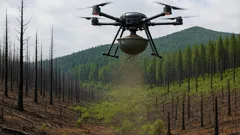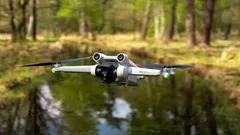202
4
4 minutes
Suggested Articles

First-generation Ivy Leaguers triumph over unique college challenges
Discover key insights, life hacks, and data-driven tips for first-generation college students thriving in prestigious U.S. universities. Find practical strategies, unique challenges, and fresh perspectives essential for student success.

Strange customer requests spark surprise and laughter in everyday retail life
Hiring

Engineers give robots human-like touch as hydrogel skin transforms connection
Resources & Tools

Japan’s Drones and AI Are Revolutionizing Forest Restoration Worldwide
Civic Education

Hidden Devices in Yards: The Latest Threat to Home Privacy
News & Updates

Discover Real Animal Hybrids Like Ligers, Zonkeys, and Wholphins
News & Updates

Eco-conscious Americans embrace bold steps to keep our sky blue and Earth green
Civic Education

Gardeners transform neighborhoods and nurture community with no-dig methods
Civic Education

Educators and innovators unlock new frontiers with boundary-breaking hybrid drones
Resources & Tools

Family Dig Reveals Giant Mastodon Teeth Hidden Beneath Suburban Backyard
News & Updates

Hidden Recordings Found on Old iPod Reveal Apple Engineer’s Untold Stories
News & Updates

First-generation Ivy Leaguers triumph over unique college challenges
Hiring

Americans brace for possible Social Security cuts that reshape retirement
News & Updates

Why this Florida data leak changes how we think about privacy
News & Updates

Build your own AI chatbot and unlock hands-on tech superpowers
Resources & Tools

How to outsmart hidden medical expenses in your golden years
Civic Education

California workers secure jobs this summer with new 2025 laws
Hiring
 Love Women Vibes
Love Women Vibes

Comments